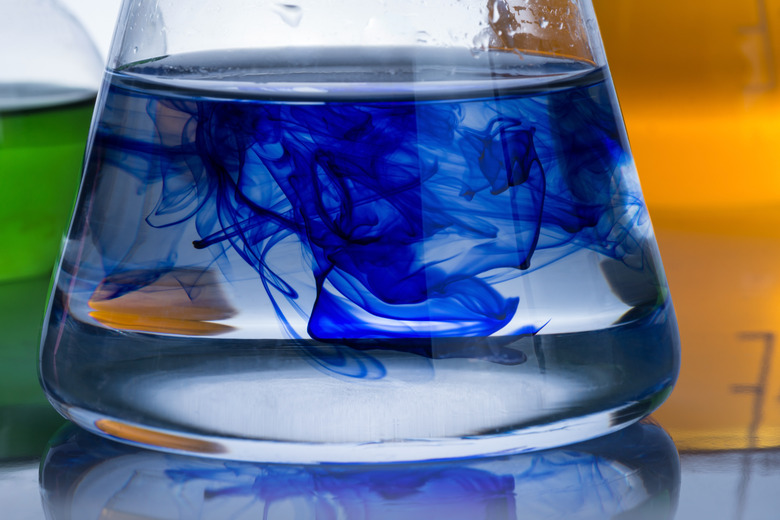Conductivity Vs. Concentration
When you look at a cup of salt water, you might not imagine it has the potential to conduct electricity- but it does! The relationship between an ionic solution like salt water and its conductivity is a function of its concentration and the ability of its charged particles to move freely in the solution.
TL;DR (Too Long; Didn't Read)
Solutions that contain dissolved salts conduct electricity because they release charged particles into solution that are capable of carrying an electric current. In general, the conductivity of salt solutions increases as the amount of dissolved salt increases. The exact increase in conductivity, however, is complicated by the relationship between the concentration of the salt and the mobility of its charged particles.
Ionic Compounds
Ionic Compounds
To a chemist, the term "salt" refers to more than simple table salt. As a class of compounds, salts are chemicals comprised of a metal and a nonmetal. The metal assumes a positive charge and is a cation whereas the nonmetal assumes a negative charge and is an anion. Chemists refer to such salts as ionic compounds. Electrostatic interactions, which simply refers to the attractive forces between the oppositely charged metal and nonmetal, hold ionic compounds together as solids.
Ionic Compounds in Water
Ionic Compounds in Water
Some ionic compounds are water-soluble, which means they dissolve in water. When these compounds dissolve, they dissociate, or break into their respective ions. Table salt, also called sodium chloride and abbreviated NaCl, dissociates into sodium (Na) ions and chloride (Cl) ions. Not every ionic compound dissolves in water. Solubility guidelines provide chemists and students a general understanding of which compounds will dissolve and which compounds will not dissolve.
Concentration of a Substance
Concentration of a Substance
In basic terms, concentration simply refers to the amount of substance dissolved in a given amount of water. Scientists use various units for specifying concentration, such as molarity, normality, mass percent and parts per million. The exact unit of concentration runs secondary, however, to the general principle that higher concentration means a larger quantity of dissolved salt per unit volume.
Electrical Conductivity
Electrical Conductivity
Many people are surprised to learn that pure water is actually a poor conductor of electricity. The relevant term in the previous statement is "pure." Virtually any water from a natural water source like a river, lake or ocean will act as a conductor because it contains dissolved salts.
Good conductors allow for the easy, sustained flow of electric current. In general, a good conductor possesses charged particles that are relatively mobile (free to move). In the case of salts dissolved in water, the ions represent charged particles with relatively high mobility.
Conductivity and Concentration
Conductivity and Concentration
The conductivity of a solution depends on the number of charge carriers (the concentrations of the ions), the mobility of the charge carriers and their charge. Theoretically, conductivity should increase in direct proportion to concentration. This implies that if the concentration of sodium chloride, for example, in a solution doubled, the conductivity should also double. In practice, this does not hold true. The concentration and mobility of the ions are not independent properties. As the concentration of an ion increases, its mobility decreases. As a consequence, the conductivity increases linearly with respect to the square root of concentration instead of in direct proportion.
Cite This Article
MLA
Brubaker, Jack. "Conductivity Vs. Concentration" sciencing.com, https://www.sciencing.com/conductivity-vs-concentration-6603418/. 21 May 2018.
APA
Brubaker, Jack. (2018, May 21). Conductivity Vs. Concentration. sciencing.com. Retrieved from https://www.sciencing.com/conductivity-vs-concentration-6603418/
Chicago
Brubaker, Jack. Conductivity Vs. Concentration last modified March 24, 2022. https://www.sciencing.com/conductivity-vs-concentration-6603418/
